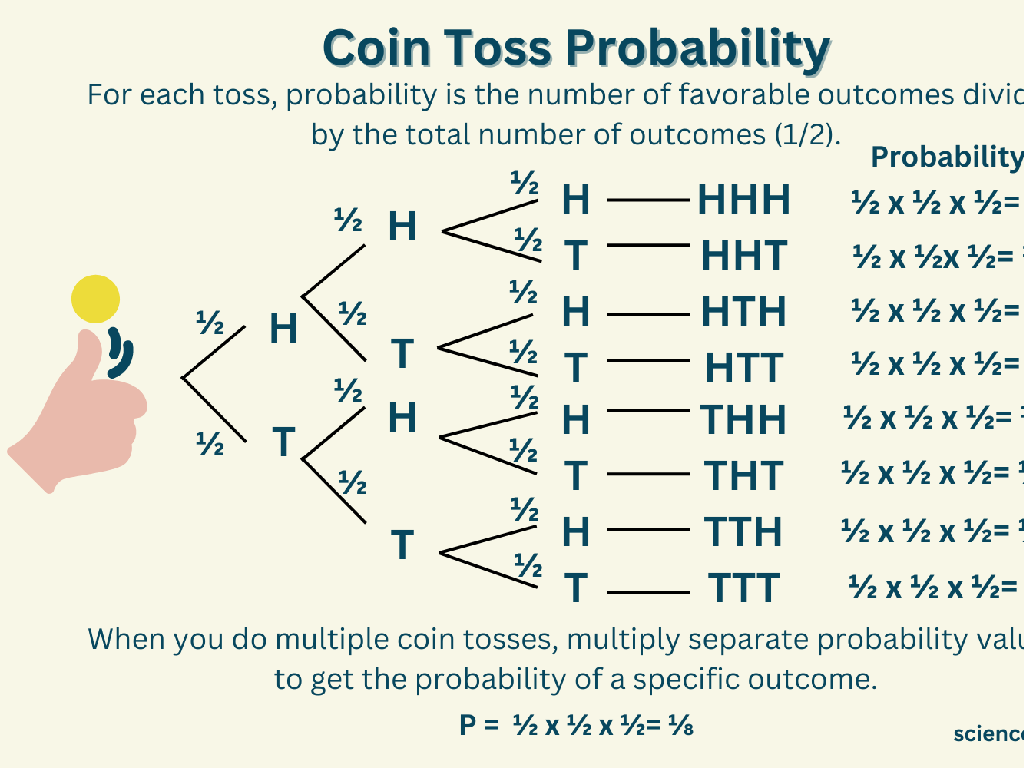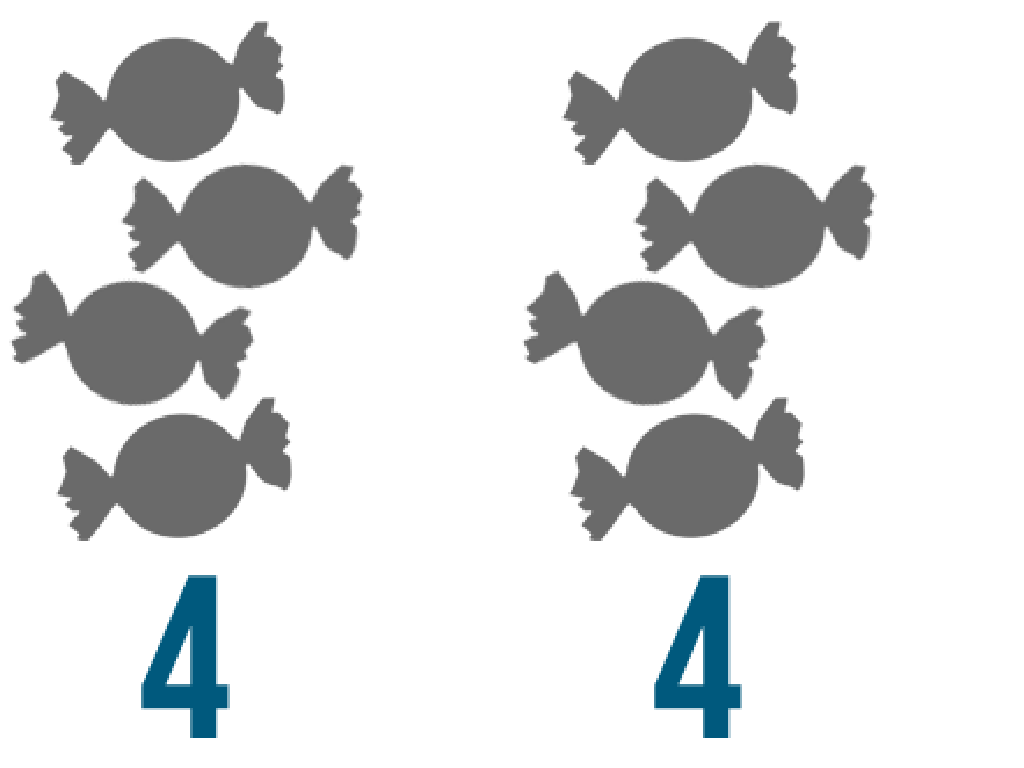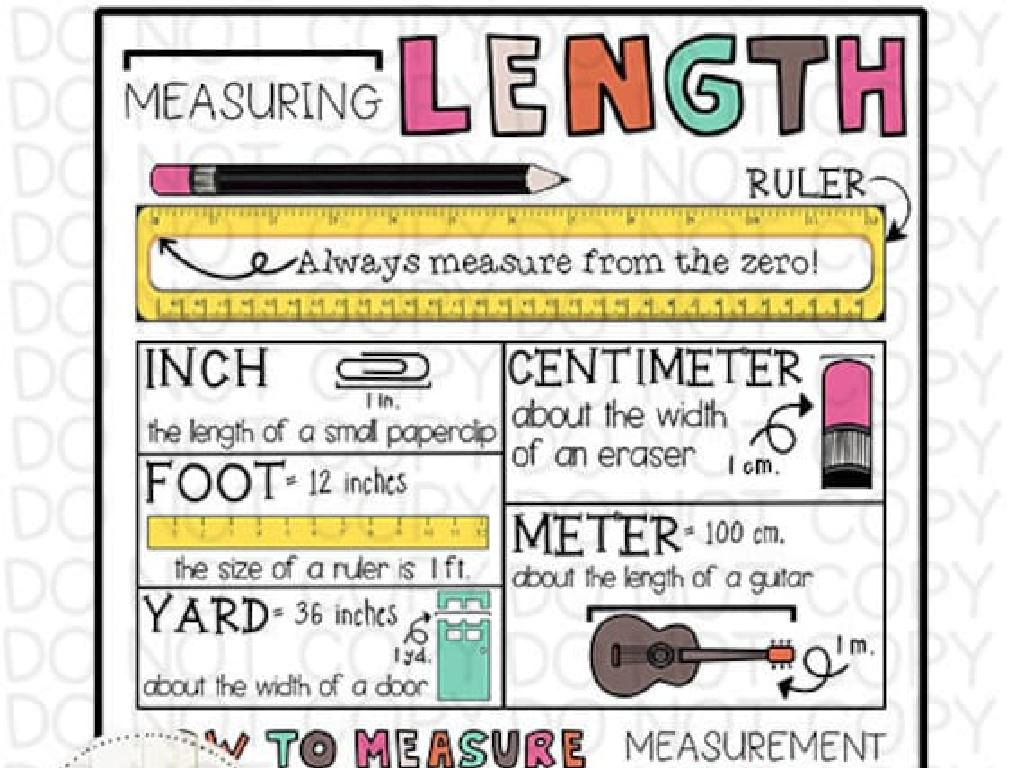Sort Elementary Substances And Compounds Using Models
Subject: Science
Grade: Sixth grade
Topic: Atoms And Molecules
Please LOG IN to download the presentation. Access is available to registered users only.
View More Content
Welcome to Atoms and Molecules!
– Atoms: The tiny units of matter
– Everything is made of atoms, which are too small to see.
– Molecules: Atoms join to form molecules
– When atoms link together, they make molecules.
– Sorting substances using models
– Use ball-and-stick models to visualize different substances.
– Compounds: Molecules with different atoms
– Compounds are a type of molecule with two or more kinds of atoms.
|
This slide introduces the fundamental concepts of atoms and molecules, which are the building blocks of all matter. Atoms are the smallest units of matter that retain the properties of an element. Molecules are formed when two or more atoms join together. Students will learn to sort substances by using models, such as ball-and-stick models, to represent the structure of atoms and molecules. Additionally, they will understand that compounds are molecules that consist of different types of atoms. This knowledge sets the foundation for exploring how substances are made and how they interact in chemical reactions.
Atoms: The Basic Building Blocks
– Atoms: Foundation of matter
– Smallest units of matter, building blocks for everything we see.
– Protons, neutrons, and electrons
– Atoms consist of a nucleus with protons and neutrons, electrons orbit around.
– Exploring atomic structure
– Atomic structure determines how atoms bond to form substances.
– Significance in substances
|
This slide introduces the concept of atoms as the fundamental units of matter, which are essential for understanding the composition of everything in the universe. Emphasize that atoms are made up of three main particles: protons, neutrons, and electrons. Protons have a positive charge, electrons have a negative charge, and neutrons have no charge. The arrangement of these particles within the atom is crucial as it influences how atoms interact with each other to form more complex substances. Use models to show the atomic structure and explain how different numbers of protons, neutrons, and electrons can lead to the formation of various elements. Highlight the importance of understanding atomic structure when sorting elementary substances and compounds.
Molecules: When Atoms Join Forces
– Atoms bonding into molecules
– Atoms connect by sharing or exchanging electrons
– Examples of simple molecules
– Water (H2O) and Oxygen (O2) are common simple molecules
– Molecules in compounds
– Compounds consist of molecules with different types of atoms
– Understanding molecular models
|
This slide introduces the concept of molecules, which are formed when two or more atoms bond together. Emphasize the idea that atoms can bond by sharing or exchanging electrons, leading to the formation of molecules. Provide relatable examples like water and oxygen to help students visualize simple molecules. Explain that compounds are made up of molecules that contain different types of atoms and that understanding molecular models can help students visualize the structure of substances. Encourage students to use model kits or drawings to represent molecules and compounds, reinforcing the lesson with hands-on activities.
Elementary Substances vs. Compounds
– Characteristics of elementary substances
– Consist of a single type of atom, e.g., Oxygen (O2)
– Recognizing compounds
– Made of two or more elements chemically combined, e.g., Water (H2O)
– Comparing substances and compounds
– Substances have one type of atom; compounds have a chemical formula
– Using models to differentiate
– Physical models show atoms in substances vs. compounds
|
This slide aims to clarify the distinction between elementary substances and compounds for sixth-grade students. Elementary substances are pure chemical substances that consist of only one type of atom, such as the oxygen molecule (O2). Compounds, on the other hand, are made up of two or more different elements that are chemically bonded together, such as water (H2O). Key differences include the number of atom types and the presence of a chemical formula for compounds. To help students visualize, use models that represent the atomic composition of both substances and compounds. Encourage students to think about the properties of each and how they might be represented in a physical model. This will aid in their understanding of the basic building blocks of matter.
Modeling Atoms and Molecules
– Visualizing atoms with models
– Models represent tiny atoms we can’t see
– Constructing atom and molecule models
– Use materials like clay or beads to build models
– Models vs. real-life scale
– Models are much larger than actual atoms
– Significance of scale in models
|
This slide introduces the concept of using models to represent atoms and molecules, which are too small to be seen with the naked eye. Students will learn the importance of models in visualizing and understanding the structure of atoms and molecules. They will engage in a hands-on activity to build their own models using everyday materials, which will help them grasp the concept of atomic and molecular structures. The slide also touches on the concept of scale, emphasizing that models are much larger than the actual substances they represent, to make them observable and to facilitate learning. The teacher should prepare a list of materials for model building and consider different scales to ensure students understand the real size of atoms and molecules compared to their models.
Sorting Substances and Compounds
– Understand sorting criteria
– Criteria based on atomic composition
– Engage in group sorting activity
– Use models to sort substances
– Represent substances with model kits
– Discuss and compare findings
|
This slide introduces the concept of sorting substances and compounds based on their atomic composition. Students will participate in a hands-on group activity using model kits to represent different substances and compounds. They will sort these models according to predefined criteria, such as the number of atoms or types of molecules present. After the activity, students will discuss their sorting choices and reasoning with the class, allowing them to compare different approaches and deepen their understanding of the subject. For the teacher: Prepare different model kits representing various substances and compounds. Ensure that the criteria for sorting are clear and understood by all students. Consider having different sets of criteria for each group to encourage diverse thinking. After the activity, facilitate a discussion that allows students to explain their sorting process and what they learned.
Class Activity: Let’s Sort Substances and Compounds!
– Understand sorting activity instructions
– Classify using physical models
– Use model kits to separate atoms, molecules, substances, and compounds
– Share findings with the class
– Present the sorted groups to peers
– Engage in group discussions
– Discuss the characteristics that led to each classification
|
This activity is designed to reinforce the concept of sorting elementary substances and compounds through hands-on learning. Provide students with model kits representing different atoms and molecules. Instruct them to sort these models into groups of pure substances (elements) and compounds based on their characteristics. After sorting, students will share their results with the class, explaining their reasoning. Encourage them to discuss the properties that distinguish elements from compounds. This will help them understand the concept of molecules and how they form different types of matter. Possible activities include sorting by molecule size, color-coding elements, or grouping by states of matter. Ensure that each student has a chance to participate and contribute to the discussion.
Conclusion: Atoms, Molecules & Models
– Recap: Atoms & Molecules
– Atoms are the building blocks, molecules are atoms bonded together.
– Substances vs. Compounds
– Substances are pure, compounds are chemical combinations of elements.
– Models in Scientific Understanding
– Models help visualize complex concepts, like how atoms form compounds.
– Engage in Q&A Session
|
This slide aims to consolidate the students’ understanding of the basic units of matter and the role of models in science. Begin with a review of atoms and molecules, emphasizing that atoms are the smallest units of an element, while molecules are groups of atoms bonded together. Clarify the difference between substances (which are made of only one type of atom or molecule) and compounds (which consist of two or more types of atoms chemically bonded). Highlight the importance of models in science for visualizing and explaining concepts that are too small or too complex to observe directly. Conclude with a Q&A session to address any uncertainties and to reinforce the students’ knowledge through discussion.





